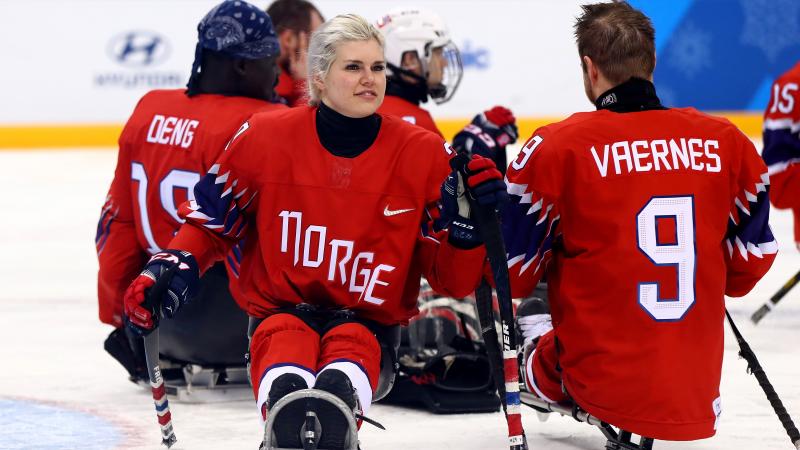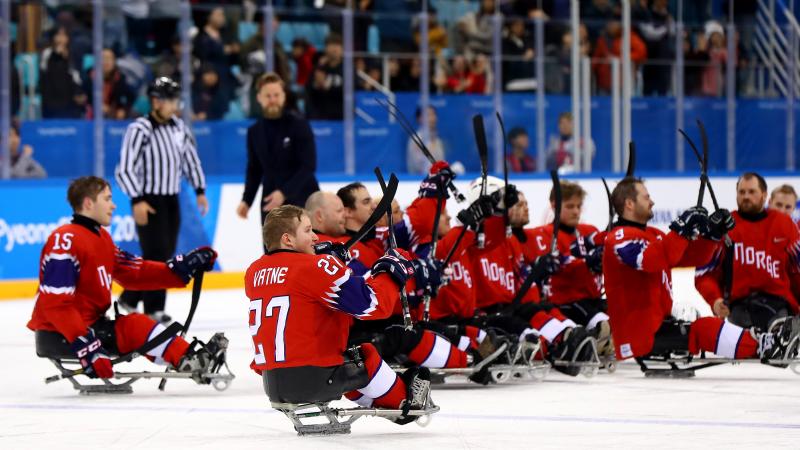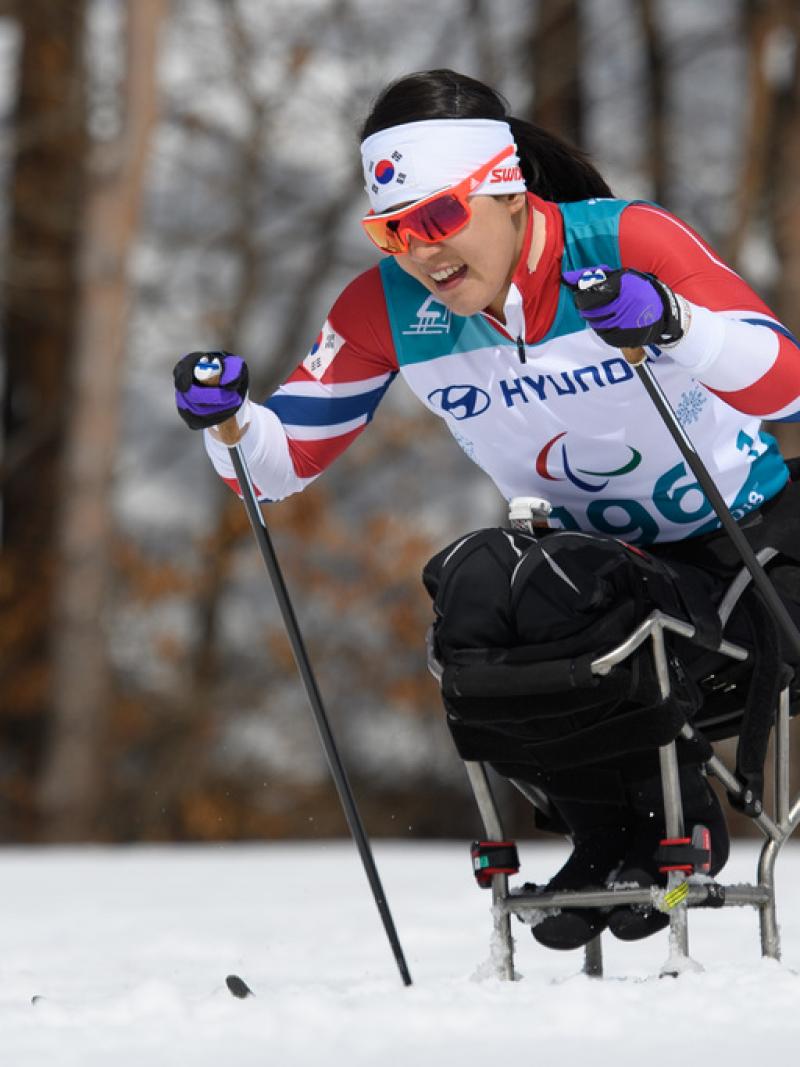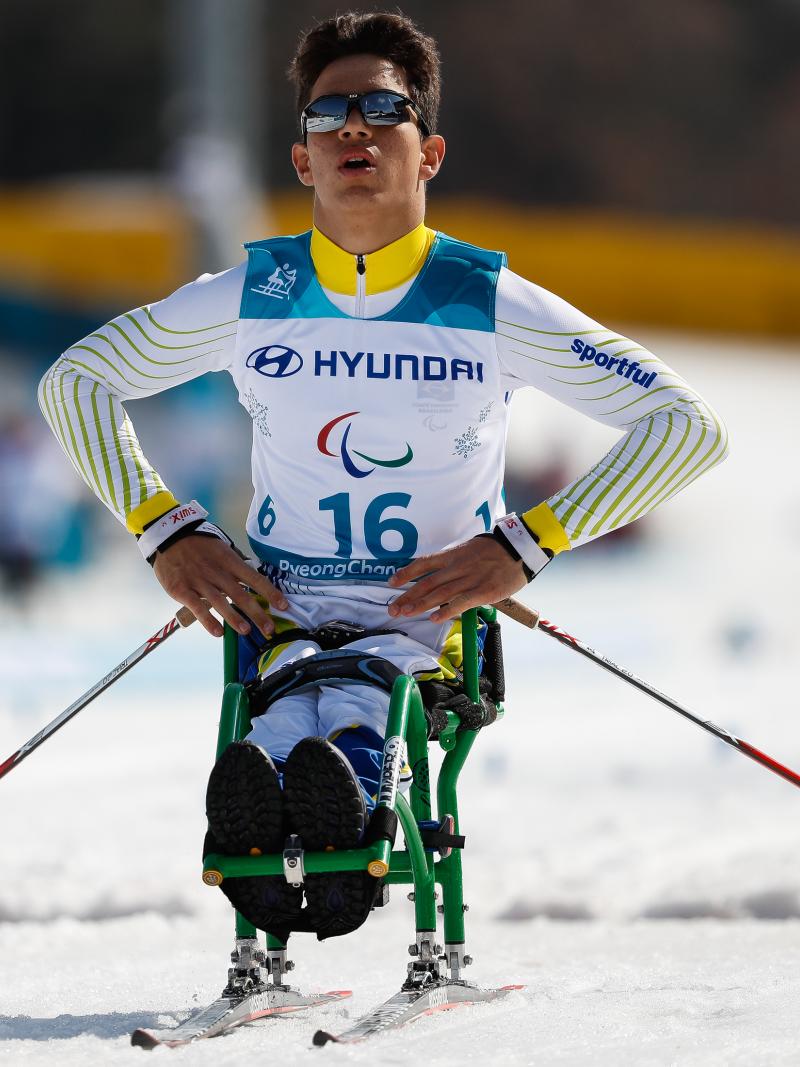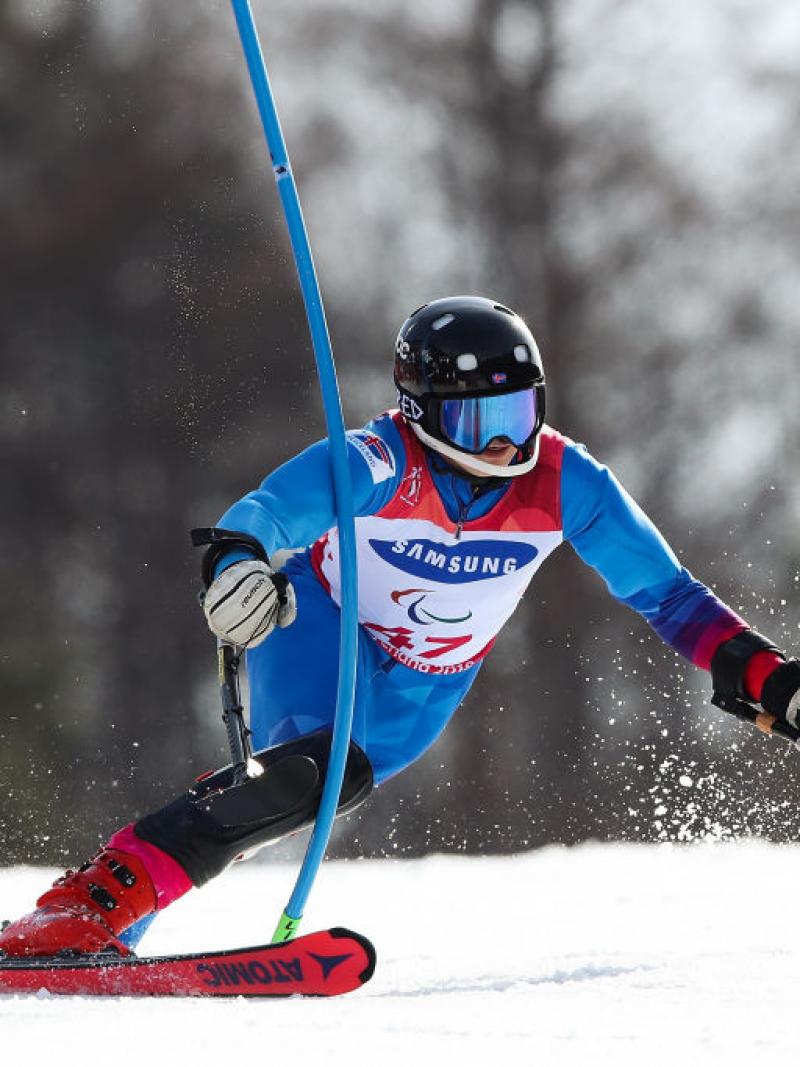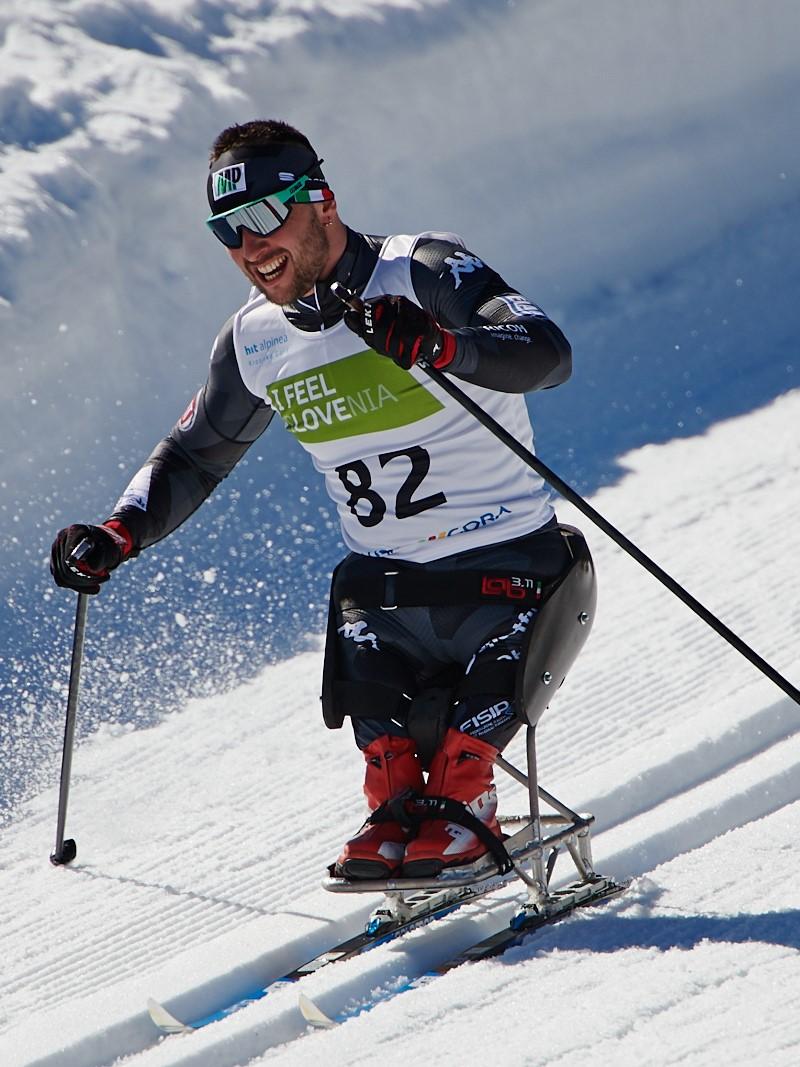Norway’s female Para ice hockey pioneers Oeyen and Schroeder cross paths
Lena Schroeder made history as the first female Para ice hockey player at a Paralympic Winter Games since Brit Mjaasund Oeyen in 1994. The two legends met face-to-face for the first time. 07 Mar 2021One might be 76 years old and the other 27, but two of Norway’s Paralympic trailblazers had a huge amount in common – and a lot to talk about – when they met for the first time over Zoom.
Brit Mjaasund Oeyen is a history maker in winter sports: between the Geilo 1980 and Lillehammer 1994 Paralympic Winter Games, she gathered an impressive 14 medals (10 gold, three silver and one bronze), mainly in ice sledge speed skating. But she also broke the mould by becoming the first Norwegian female to be selected for the national ice hockey team – which is mixed, but had always been made up of men. They won silver at Lillehammer 1994.
Lena Schroeder, meanwhile, made international headlines at PyeongChang 2018 as the lone female player in the Para ice hockey competition – the first since Oeyen, in fact, 24 years earlier.
“Brit inspires me. We’ve never met but I’ve heard all about her so many times so it is so fun to meet,” Schroeder said. “I know all about her Para ice hockey achievements. It’d be incredible to do something like she did.”
Schroeder, who was born with spina bifida, started playing Para ice hockey aged 15 as it was one of the few accessible sports available near her home. But even more, she learned there was another women who played the game ahead of her.
“There were three or four girls playing on the team but I was the one who stuck with it,” she said.
“I played through high school and when I moved to Oslo to go to medical school I joined Oslo team there. That meant I could play with the national team players, and I got a lot better. Eventually I started to think I might be good enough to play for Norway, and the Paralympics became an aim.
“So I did my research and found out about Brit. I realised there was another woman who’d done this. I felt it would be possible. I knew all the players anyway so I knew the level I had to be at. I knew it was within reach.”
Oeyen tells Schroeder – who is currently a frontline doctor at an Oslo hospital, and has just done a night shift fighting coronavirus before the conversation – that she is a “tough cookie”. Oeyen herself is equally impressive. She contracted polio aged 5 but as a child worked farming sheep, and then became a sportswoman at both the Summer and Winter Paralympics despite living in a rural area not well set up for people with impairments. She became Norwegian champion in dressage, as well as competing in shot put at the Arnhem 1980, and playing volleyball.
“I was a tough cookie, too,” she said. “I travelled all over the world. For me, playing in a hockey team with the men was fine. I was an excellent skater on the sledge so I could fit right in. I knew them all, I used to train with them, I was just as capable. It’s not for everybody, taking hits from the guys, but I was fine with it.”
Schroeder agrees: “I’m so used to playing with the men, it’s completely natural. We all know each other, we’re friends, nobody thinks about it.”
After being a fringe squad member at PyeongChang, Schroeder has been getting more ice time recently. “I’m still in the third line, not the best player, but I got a lot more ice time at the World Championships. The coach trusts me to do a job.”
Schroeder is planning to take time out from her medical career to try to reach Beijing 2022. If she does, Oeyen will be watching.
“I don’t know what advice to give Lena because the sport has changed so much,” said Oeyen, adding with a laugh: “But I do know that Norway need to pull themselves together. We used to be number one, and they need to get back to that.”
Schroeder vows to try, and is clearly impressed. “Brit had so many achievements,” she said. “If you had as many medals as she has as a modern Paralympian, she would be a superstar. Her generation are inspiring. They deserve more credit than they get.”

 Facebook
Facebook
 Instagram
Instagram
 Twitter
Twitter
 Youtube
Youtube


